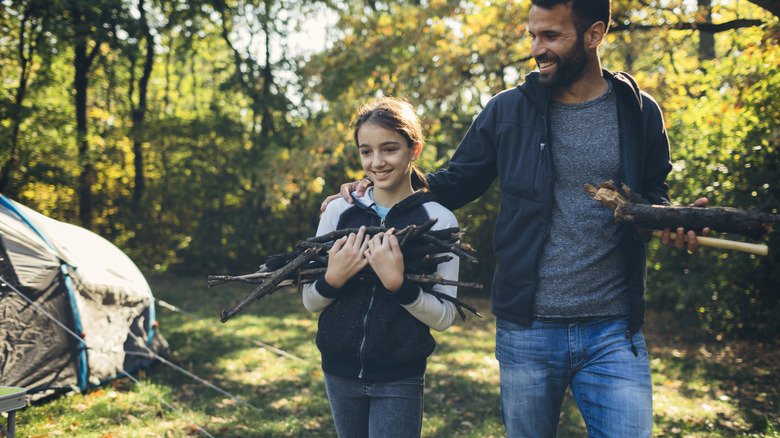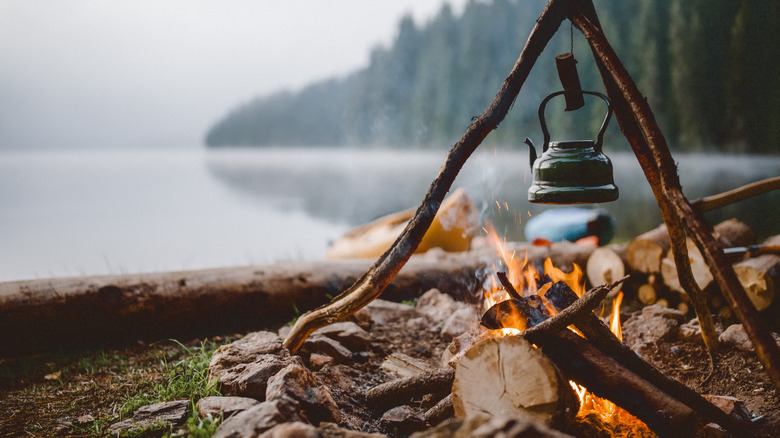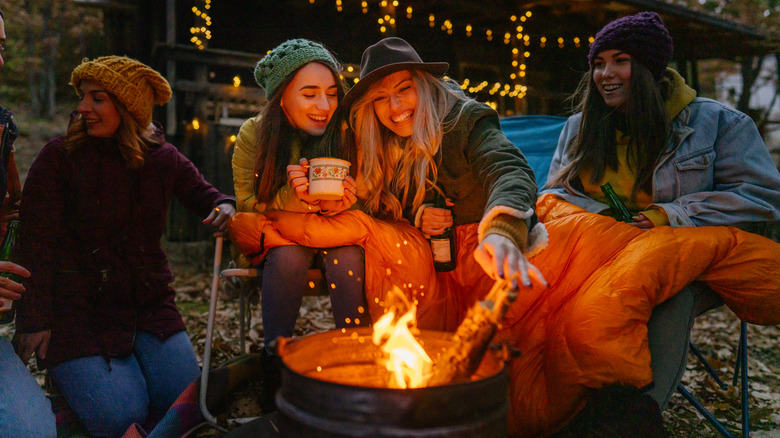Ask an avid camper their favorite thing about heading outdoors for a night — or three — and they’ll all hint at something different. For some, it’s the entire act of disconnecting from the world and going back to basics. For others, it’s the sense of excitement that comes with setting up a tent and enjoying a camping adventure under the stars. And for others, it all comes down to sitting around a cozy campfire, surrounded by the scent of marshmallows toasting.
However, these dreams of toasty s’mores and sing-alongs can quickly become a frustrating nightmare because of one simple problem: wet firewood. Whether the rain hasn’t stopped or dew has soaked through the logs, there are few things more annoying than starting a campfire with a pile of wood that just won’t cooperate or stay lit.
Luckily, despite the added hassle, wet wood doesn’t have to put an immediate stop to the fun. In fact, the solution is quite simple: Just add more kindling and tinder and build your fire up. By doing so, you’ll have a much easier time getting a flame going while the damp wood dries out and lights up at the same time.
Wet wood isn’t the end of the world

Albeit annoying, wet and damp wood doesn’t mean you’ll never be able to get a fire going — it just means you’ll need a little more patience to do so. First things first, if you’re working with damp or wet wood, you’re going to need a lot of extra timber and kindling to get the flames going — as in, almost four times as much as the normal amount. In terms of kindling, you’ll want to go on a quick hunt around the campground for things like dry twigs, shavings, and deadwood that’ll catch fire quickly and easily.
Whatever you do, make sure you stay away from green wood. High in moisture, this type of wood doesn’t burn as hot, produces too much smoke, and can leave behind traces of creosote — a potential fire hazard for the next person who uses the fire pit.
Along with your kindling, you’ll also want to make sure you have some tinder handy. These combustible materials are a must for maintaining a fire that’ll last through the initial lighting phase and help dry out the wet wood. What makes a great tinder? Anything from dryer lint to vaseline-soaked cotton balls, Doritos and Cheetos, crumpled paper, lighter fuel, paraffin wax, and even some locally picked dry grass.
Construction matters

Once you’ve collected your supplies, it’s all about building out a strong base for your fire to thrive. Ideally, you’ll want to start by building your fire upwards to avoid any more water from collecting at the bottom and making things wetter than they were to begin with.
To do so, you’ll want to make sure you build your fire in a teepee shape — with your tinder in the center and your kindling placed vertically around it. After this initial structure is up, grab two pieces of your wet firewood and lay them parallel to each other on either side of your kindling teepee, ensuring that they’re both taller than what’s in the middle. On top of these, place two more pieces of wet firewood above — not necessarily touching — the kindling.
From there, you’re ready to light your fire. Using matches or a lighter, set your kindling ablaze and feed it with more kindling as needed. Before you know it, the flames will have dried up the logs and they’ll also start to burn. Continue to pile on your damp wood on top of the flames and ta-da! You’ll have a strong fire going that’ll get your plans of gooey snacks and campfire stories back on track.

